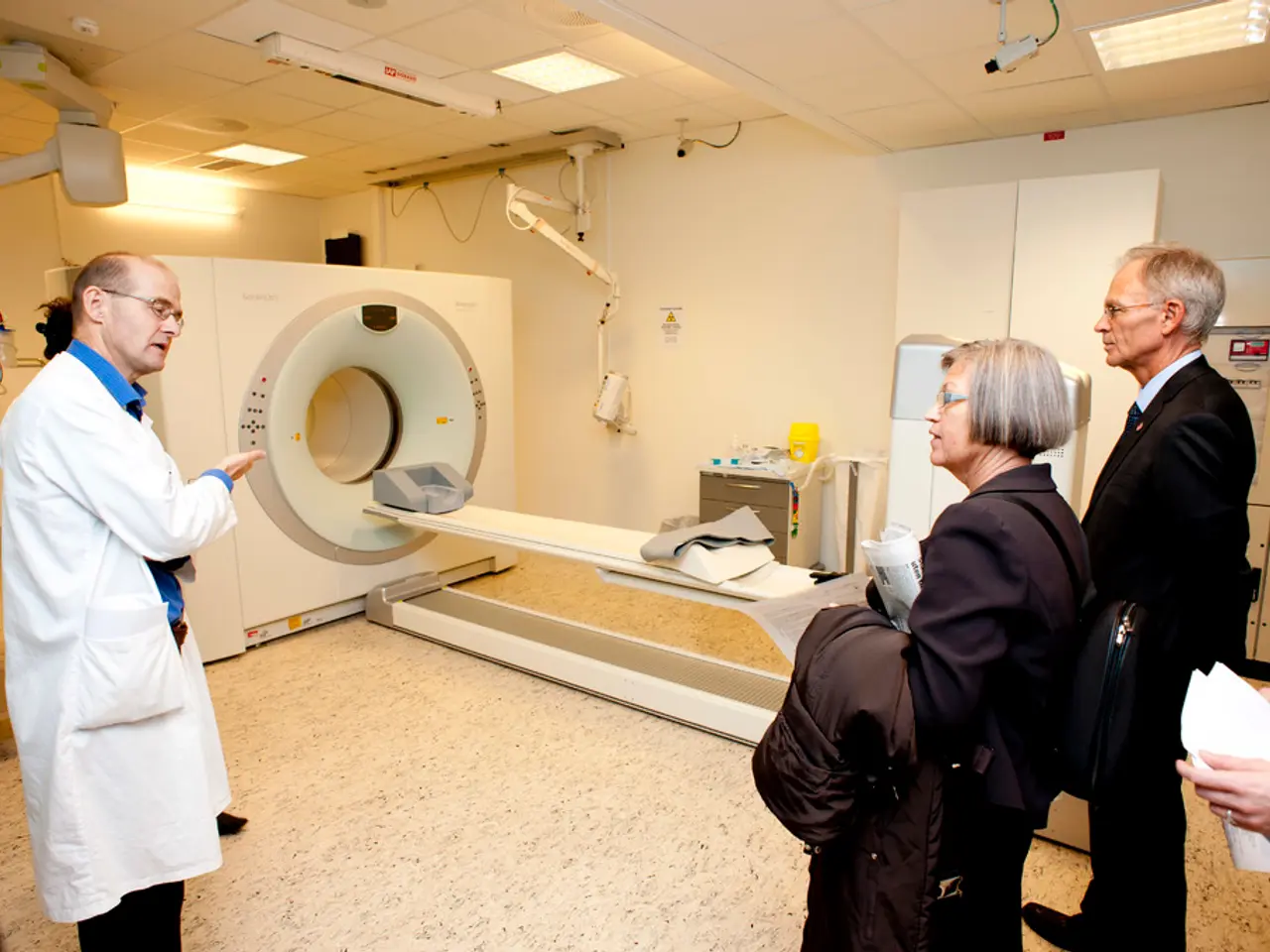Duration of Stroke Visibility in MRI or CT Scans
Headline: MRI Scans Prove Superior for Early Stroke Detection
In the critical hours following a stroke, it can be challenging to confirm an ischemic stroke via a CT scan. This is because CT scans, while effective at ruling out other causes for a person's symptoms, do not provide the same level of detail as an MRI.
Medical imaging, such as MRI and CT scans, play a crucial role in determining the type of stroke a person has had and showing which areas of the brain it affected. An MRI, in particular, offers a more detailed image of the brain and is considered more effective than a CT scan for finding out exactly which parts of the brain a stroke affected.
An MRI can reveal areas in the brain where vessels are narrow and blood flow is restricted, as well as areas where plaque is unstable, which can cause restrictions or blockages in blood vessels. This information is invaluable to doctors, as it allows them to begin treatments and try to prevent further strokes from occurring.
MRI scans are sometimes used after a CT scan to get more detailed images of the stroke. In some cases, an MRI can detect silent strokes, which are strokes with mild or no symptoms that may go unnoticed. An old stroke will appear as small white spots on MRI scans that indicate damaged tissue.
Interestingly, a person may have a silent stroke and find out about it later in life during an MRI scan for another reason. This highlights the importance of regular health check-ups and the role that imaging plays in detecting conditions that may not have any immediate symptoms.
The table below summarises the differences between CT scans and MRI scans in terms of early stroke detection:
| Imaging Modality | Earliest Stroke Detection Time After Onset | Sensitivity in Early Hours | |------------------|--------------------------------------------|---------------------------| | CT scan | About 1-3 hours for early signs; detection improves over first 6 hours (60-70% for MCA infarcts) | Limited sensitivity in first few hours; some strokes appear normal initially | | MRI scan | Within minutes (diffusion MRI) | High sensitivity, can detect very early ischemic changes |
In conclusion, MRI scans are more effective at detecting stroke immediately after onset, while CT scans are typically faster and used first mainly to exclude hemorrhage and gross infarction but may miss early ischemic changes. By understanding the strengths and limitations of each imaging modality, doctors can make informed decisions about the best course of action for their patients.






